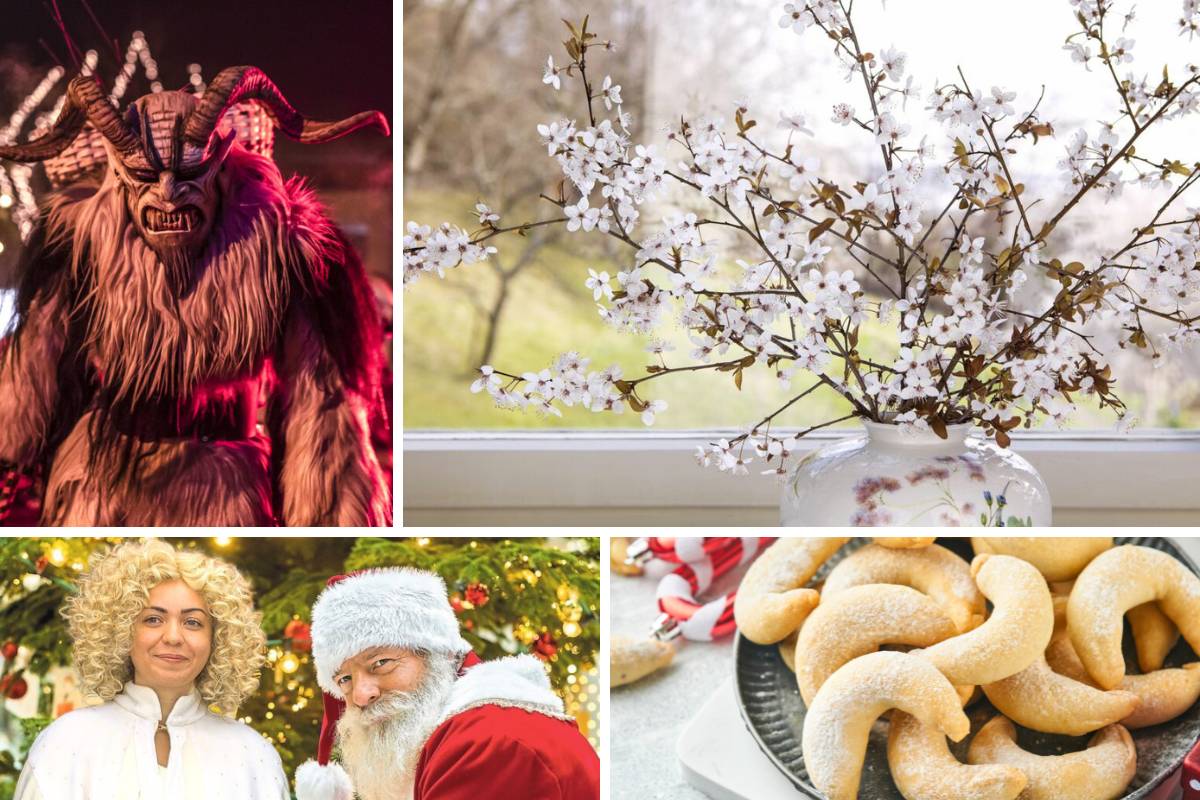When I think of Christmas, my mind often wanders to the holiday celebrations in Austria. I remember the streets filled with Christmas markets, where you can find everything from handmade crafts to traditional Austrian food and drink. The air smells of mulled wine, chestnuts, and pastries. There is something truly special about how Austrians celebrate this festive season. From the lighting of the Advent wreath to the arrival of Christkind, each tradition adds to the charm and warmth of Christmas in Austria.
When is Christmas in Austria
The Austrian Christmas magic begins with Advent, on Sunday four weeks before Christmas Day, and lasts until Christmas Eve, December 24th. Advent is the time when people start decorating their homes, baking cookies, and visiting Christmas markets.
4th of Decemeber Barbarazweige
On December 4th, Austrians celebrate the Feast of Saint Barbara. Families bring cherry or apple tree branches into their homes, water them, and place them in a warm room. If they blossom by Christmas, they bring luck for the coming year.
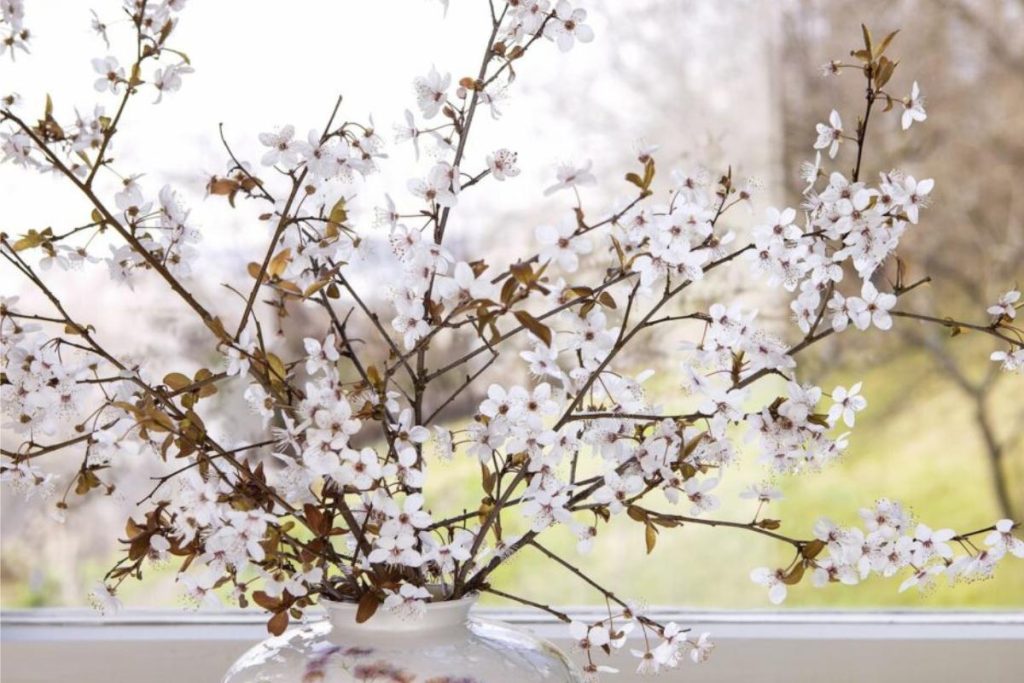
5th and 6th of December Krampus and Nikolaus
On December 5th and 6th, Saint Nicholas and Krampus come to visit. Saint Nicholas, like Santa Claus, brings gifts for good children on the 6th. Most children leave their cleaned boots outside the house door for Nikolaus to fill the boots with gifts and sweets. However, Krampus, his darker counterpart, metes out punishments for the misdeeds of the past year and also scares away the dark winter spirit the night before.

24th of December Austrian Christmas Celebration
Unlike in America, Austrians celebrate Christmas on December 24th, not Christmas Day. The celebration does not begin before late afternoon as some people still have to work until midday. Christmas Day (25th) and Boxing Day (26th) are the only two public holidays when most shops are closed.
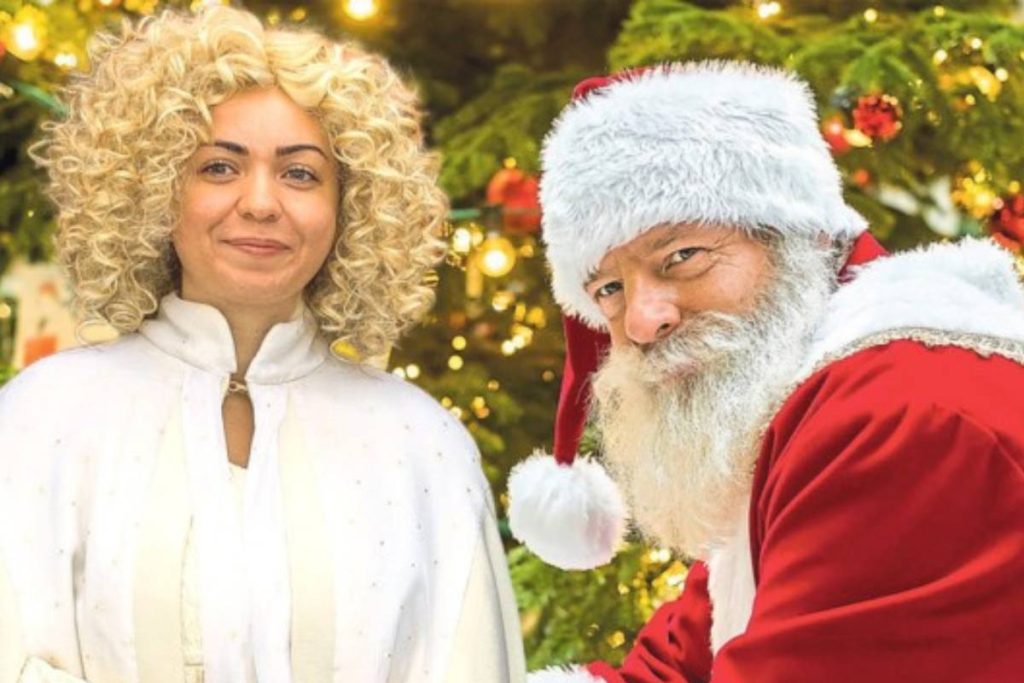
In Austria, the figure that brings the presents to the children is the “Christkind,” an angel with golden hair, not Santa Claus.
25th of December Christmas Day
Christmas Day in Austria is a day of family gatherings and festive meals. The day’s highlight is the festive meal, featuring traditional Austrian dishes like baked carp and fried potatoes. Christmas Day in Austria is a day of joy and celebration, a day to spend with family and friends and to enjoy the warmth and love of the season.
“Rauhnächte” in Austria
The 12 nights around the beginning of the new year are called Rauhnächte. The 4 most important Rauhnächte are the night of Thomas night on the 21st of December, Christmas Eve on the 24th of December, New Year’s Eve on the 31st of December, and Epiphany night on the 5th of January.
The “Rauhnächte” are very special. During these nights, people burn incense inside their homes to protect them from bad luck and ask for good fortune in the new year.
On January 6th, the Three Kings’ Day is celebrated. Children and young people walk from house to house, singing songs and collecting money for charitable purposes.
Best Christmas Markets in Austria
Austria is renowned for its Christmas markets, a highlight of the festive season. These markets are a feast for the senses, with twinkling lights, the scent of mulled wine and gingerbread, and the sound of Christmas carols filling the air.

Vienna’s Christkindlmarkt
In my opinion, the Christkindlmarkt in Vienna is a must-visit. This market is from mid-November until Christmas in front of the City Hall and is one of the most famous in Austria.
I remember the first time I visited, I was mesmerized by the beautiful stalls selling everything from handmade crafts to traditional Austrian food and drink. My highlight was the large ice-skating rink, where my kids had a blast skating under the twinkling Christmas lights.
Salzburg’s Christmas Market
Salzburg’s Christmas Market is another one that holds a special place in my heart. Located in the Old Town, this market blends tradition and festivity.
I was particularly impressed by the range of traditional Austrian crafts on offer. My family and I also enjoyed the various performances, from choirs to brass bands, that added to the festive atmosphere.
And, of course, no visit to Salzburg’s Christmas market would be complete without trying some of the delicious food on offer, from pretzels to sausages to sweet pastries.
Christmas Traditions in Austria
Austria is a country rich in traditions, especially when it comes to Christmas. From the advent wreath and calendar to the Barbara twigs, Saint Nicholas & Krampus, the festive season in Austria is something truly special.
Advent Calendar
A memory of mine is the Advent calendar my family and I used to have (and still have). We would count down the days from the 1st of December to Christmas Eve, unveiling a small surprise or a lovely image each day. It is a simple yet heartwarming tradition that added to our anticipation.
Advent Wreath
One of the most beloved Christmas traditions in Austria is the four-candle lighting of the Adventkranz. Each Sunday of Advent, people lit a new candle until all four candles are lit. Each candle represents hope, peace, joy, and love. In my family, we would gather around the wreath every Sunday, lighting a new candle and sharing a moment of reflection and gratitude.
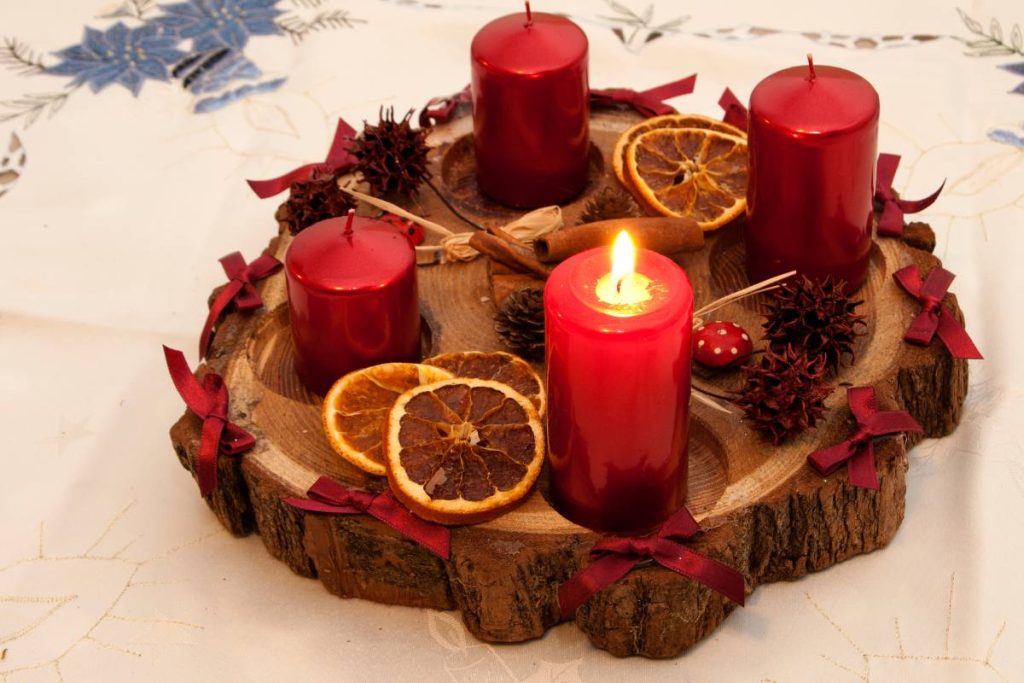
Christkind
As I already mentioned, in Austria, it’s not Santa Claus who brings the gifts, but Christkind, a golden-haired angel with wings. The Christkind is a figure in Austrian Christmas traditions. On Christmas Eve, children await the arrival of Christkind, who leaves presents under the Christmas tree.
I remember how my kids would leave a letter for Christkind on their windowsill, listing their wishes for Christmas. The belief in Christkind brings a sense of magic and wonder to Christmas in Austria.
Christmas Food in Austria
Austria is known for its culinary delights, and Christmas is no exception. The holiday season is a time when Austrians pull out all the stops to create some of the most delicious and heartwarming dishes. Here are my two favourites:
Christmas Carp (Weihnachtskarpfen)
One of the traditional dishes that I’ve come to love during the Christmas season in Austria is baked carp served with fried potatoes. The carp are usually cut into thick round pieces, dipped in flour, and then baked to perfection.
The result is a succulent fish with a crispy exterior that pairs perfectly with the hearty fried potatoes. This dish is a staple in many Austrian homes during the festive season, and it’s easy to see why. The combination of the tender fish and the crispy potatoes is simply irresistible.
I remember the first time I tasted this dish; it was a revelation. The flavors were so well balanced, and the textures complemented each other perfectly. It’s a dish that truly embodies the spirit of Christmas in Austria.
Vanilla Crescent (Vanillekipferl)
And, of course, no Austrian Christmas would be complete without Vanillekipferl. These crescent-shaped cookies are a much-loved traditional Christmas treat in Austria. They are delicate, buttery, filled with ground almonds, laced with vanilla, and dusted with powdered sugar.
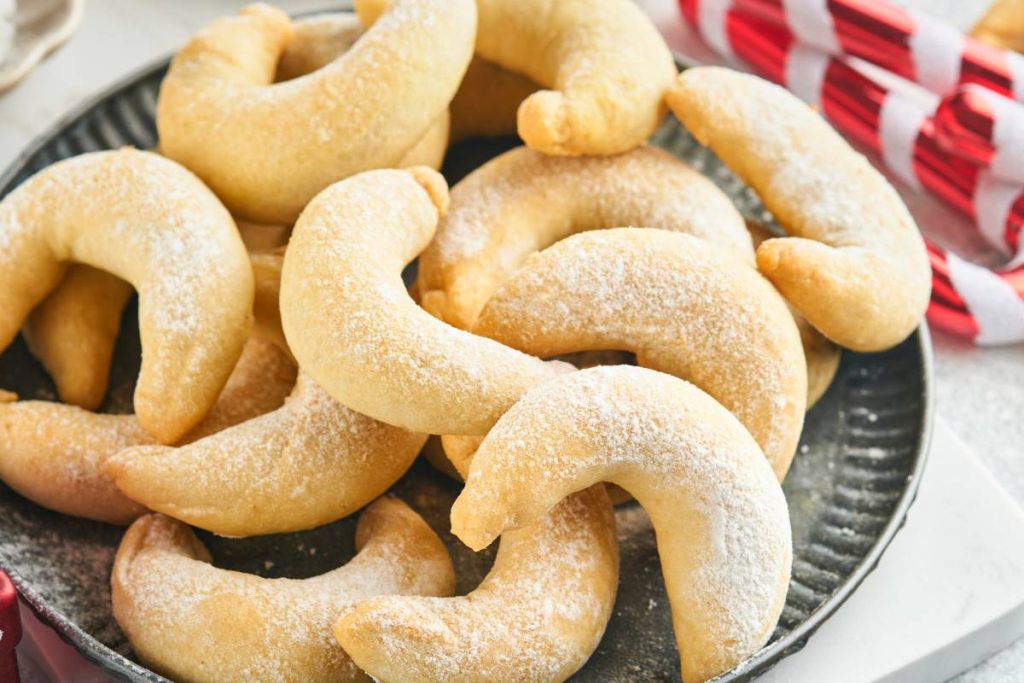
The cookies are soft and crumbly, and they melt in your mouth with a burst of vanilla flavor. I remember baking these cookies with my family during the holiday season. The aroma of vanilla and almonds filling the house is one of my favorite Christmas memories. Every bite of these cookies takes me back to those happy times.
If you ever find yourself in Austria during Christmas, I highly recommend trying these cookies. They truly capture the essence of an Austrian Christmas.
Best Place in Austria for Christmas
There are a few places that truly stand out for their festive spirit and unique celebrations.
Christmas in Vienna
When I think of Christmas in Austria, Vienna is the first city that comes to my mind. The city is beautifully illuminated with Christmas lights, creating a magical atmosphere that is hard to resist. The Rathausplatz in front of the City Hall transforms into a winter wonderland with a large ice-skating rink and numerous stalls selling Christmas goodies.
The Christmas market at Schönbrunn Palace is another must-visit, offering a royal backdrop to the festive stalls. The smell of freshly baked Vanillekipferl (vanilla crescents) and hot Glühwein (mulled wine) fills the air, adding to the festive spirit.
Christmas in Salzburg
Salzburg, the birthplace of the famous Christmas carol “Silent Night,” is another fantastic place to spend Christmas in Austria. The city’s Christmas market, located in the heart of the Old Town, is one of the oldest in the world.
The Hohensalzburg Fortress, perched high above the city, offers a stunning view of the Christmas lights below. The sound of Christmas carols echoing through the streets adds a musical touch to the festive atmosphere.
Christmas in Graz
Graz, often referred to as Austria’s most festive Christmas wonderland, is a sight to behold during the holiday season. The city’s main square, Hauptplatz, hosts a large Christmas market filled with stalls selling traditional Styrian crafts and delicacies.
The Schlossberg, a tree-clad hill in the center of Graz, is the setting for one of the city’s most popular Christmas markets. The unique atmosphere and the stunning view of the city below make it a must-visit.
Christmas in Innsbruck
Innsbruck, surrounded by the majestic Alps, offers a unique mountain Christmas experience. The city’s old town is transformed into a Christmas market, with stalls selling traditional Tyrolean crafts and food. The Golden Roof, Innsbruck’s most famous landmark, provides a stunning backdrop to the festive scene.
The Christmas market at Hungerburg, located at an elevated position, offers a panoramic view of Innsbruck and the surrounding mountains, making it a truly unforgettable experience.
Traditional Christmas Gifts
In Austria, the tradition of giving gifts during Christmas is a cherished one. The excitement of unwrapping presents under the Christmas tree is a moment that both children and adults eagerly anticipate.
Austrian Christmas gifts are a delightful blend of traditional and modern. From beautifully crafted wooden toys to mouth-watering sweets, the range of gifts is vast. One of the most popular gifts is the ‘Mozartkugel,’ a chocolate ball filled with marzipan and nougat, named after the famous composer Mozart.
These are not just delicious treats but also a piece of Austria’s rich cultural heritage. Handmade Christmas ornaments, especially those made of glass or wood, are also popular gifts. They are often intricately designed and serve as a beautiful reminder of the festive season.
Interesting Facts
How Do You Say Merry Christmas in Austria
In Austria, the joy of Christmas is shared with the phrase “Frohe Weihnachten.” This is how you say “Merry Christmas” in German, the official language of Austria. It’s a simple yet heartfelt way to spread holiday cheer in this beautiful country.
So, if you find yourself in Austria during the holiday season, don’t forget to wish the locals a “Frohe Weihnachten!”
The Story of “Silent Night”
The famous song “Silent Night,” or “Stille Nacht” in German, was written in Austria in 1818 by a young priest named Joseph Mohr, and the melody was composed by Franz Xaver Gruber.
“Silent Night,” a song that paints a serene picture of a quiet, luminous night and the marvel of a gentle newborn, was composed in the wake of the Napoleonic wars. I was amazed when I learned about the historical context of this beloved carol. Today, it’s sung passionately worldwide in over 300 languages and dialects.
The creation of “Silent Night” is a testament to Austria’s rich cultural heritage. This song, composed in a small village in Austria, has spread across the world and is now the most performed Christmas song. It’s a beautiful reminder of the peace and joy that the holiday season brings.


